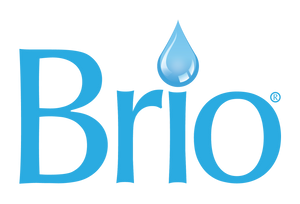You can create colorful Easter eggs without using artificial dyes. Believe it or not, the foods and spices you already have in your kitchen cabinets and refrigerator can be transformed into dyes that will produce a range of beautiful colors. Results can be surprising—which is part of the fun!
To start, you’ll need hardboiled eggs: white, brown, or a mix of both (depending on the colors you want to create). Bring eggs to room temperature before you hard boil them. This will help prevent any cracking as they cook.
Ingredients & Instructions for Making Easter Egg Dyes
Blue Dye
- 4 cups of cold water
- ½ head of red cabbage
- 2 tablespoons of white vinegar
Pour water into a pot and add cabbage. Bring to a boil, then lower heat and simmer cabbage for 30 to 45 minutes. Turn off heat and allow mixture to cool to room temperature. Strain mixture through a sieve and into a bowl or 4-cup measuring cup. Discard or compost solids. Stir in white vinegar. Distribute dye among glass jars or containers.
Pink Dye
- 4 cups of cold water
- 1 or 2 beets, peeled and cut into chunks
- 2 tablespoons white vinegar
Pour water into a pot and add beet chunks. Bring to a boil. Remove from heat, cover pot, and let beets “steep” for one hour. Strain mixture through a sieve and into a bowl or 4-cup measuring cup. Discard or compost solids. Stir in white vinegar. Distribute dye among glass jars or containers.
Brown Dye
- 4 cups of water
- Dark roast coffee
Brew 4 cups of strong coffee. Allow to cool, then distribute dye among glass jars and containers.
Yellow Dye
- 4 cups of cold water
- 4 tablespoons of turmeric powder
- 2 tablespoons of white vinegar
Pour water into a pot and stir in turmeric. Bring to a boil. Remove from heat, cover pot, and let sit until cool. Stir in white vinegar. Distribute dye among glass jars or containers.
Red-Orange Dye
- 4 cups of water
- 4 yellow onion skins
- 2 tablespoons white vinegar
Pour water into a pot and add onion skins. Bring to a boil. Remove from heat, cover pot, and let onion skins “steep” for at least one hour or until you are happy with the color. Strain mixture through a sieve and into a bowl or 4-cup measuring cup. Discard or compost solids. Stir in white vinegar. Distribute dye among glass jars or containers.
Dyeing the Eggs
Depending on the size of the containers, fully submerge one or more eggs in the dye baths. The longer eggs soak, the more intense the color. To produce light colors like pale yellow or pale pink, soak eggs for 30 minutes, or until the desired hue is achieved. For a deep, rich hue, considering soaking overnight or longer, in the refrigerator.
When done, remove eggs from their dye baths and allow them to dry on paper towels.
You can vary your soak times and egg colors to produce different colors:
- For deep gold, soak brown eggs in turmeric dye for three hours. Or use white eggs and soak overnight.
- For an intense pink, soak brown eggs in beet dye overnight.
- For teal, soak brown eggs in red cabbage dye overnight.
- For dark brown, soak brown eggs in coffee dye overnight.
- For cocoa brown, soak white eggs in coffee dye for three hours.
- For green, soak white eggs in turmeric dye for 30 or more minutes. Allow eggs to dry, then soak them in blue dye until they reach the desired shade of green.
- For pale blue, soak white eggs in cabbage dye for three hours.
These are just a few suggestions. Try different eggs, vegetables or herbs, and soaking times yourself to see what you come up with.
Present your Easter eggs on beds of freshly cut grass, flowers, or greens, in natural straw baskets.
And what to do with your pretty eggs after the admiring is done? Make some delicious egg salad, of course.
Eclectic Egg Salad Recipe
Peel your desired number of eggs. Mash them with a fork or process them in a food processor until ground to your choice of texture.
In a mixing bowl, add ground/mashed eggs, then add the desired amount of mayonnaise; fresh or dried thyme; finely minced red onion, cucumber, celery (or all 3!); and capers. Mix well.
Use to make sandwiches or spread on thick, hearty crackers. Serve immediately.
The Brio Amphora means there’s always a pitcher full of pure, filtered water, ready for you to drink or cook with. The pitcher automatically refills as you empty it, so you never have to wait for purified water... it’s just a reach away.




